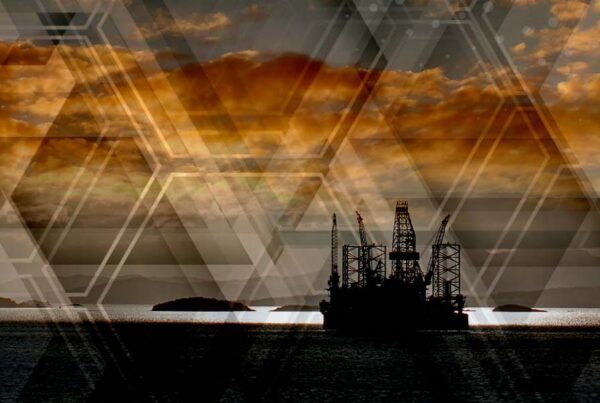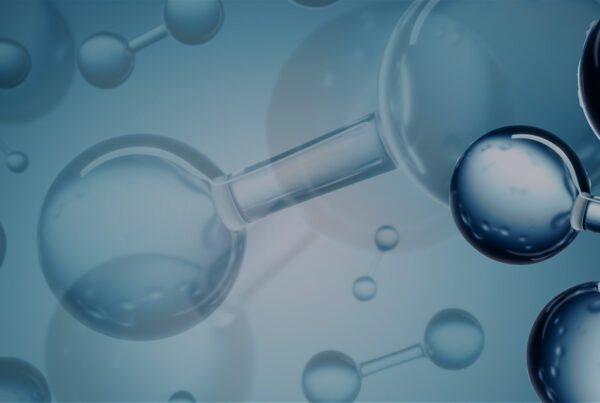JULY 2024
The month of June saw positive signs for the Northwest European hydrogen market, with progress for electrolyser manufacturers, funding mechanisms and infrastructure projects. Progress inevitably brings challenges, and so this month we highlight the potential competition electrolyser manufacturers are facing from China, and how the current state of funding and infrastructure development underscores the need to set a more realistic vision of progress for the hydrogen market.
How are key European electrolyser manufacturers stacking up?
Signs of progress emerged in the last month for electrolyser manufacturers in Europe, with Cummins announcing the start of production of PEM electrolysers at their new 500MW factory in Guadalajara, central Spain. While some initial units were produced in April, the plant’s official opening is scheduled for October. Originally announced in 2021 with a completion date set for 2023, it is unclear why the development has been delayed. It is also uncertain when the plant will reach its full 500MW capacity. However, it is important to recognise the progress being made in this part of the European hydrogen value chain, with Cummins also announcing the potential to scale its factory to 1GW, which would make it one of the largest electrolyser manufacturing plants in Europe.
Other manufacturers are also showing promising signs. According to ITM Power’s June update[1], ahead of its official preliminary results expected in August, the year-long cost-cutting programme has halved the company’s losses and tripled its revenue from £5.2mn in 2023. The programme also led to the sale of ITM’s stake in its refuelling station joint venture, Motive Fuels, in October 2023. This strategic move, aimed at focusing on electrolyser development and reducing exposure to higher-risk investment areas, has been mirrored by other manufacturers such as McPhy and most recently by Nel in June.
While there is positive momentum in Europe, project developers including Tree Energy Solutions (TES) and Madoqua Renewables have expressed interest in the last month in potentially sourcing electrolysers from China. Jens Schmidt, CTO at TES, returned from a visit to China where he inspected electrolyser factories and production systems. He reported[2] that manufacturers such as Sungrow, Peric and Logic are producing high-quality electrolysers at up to a third of the cost compared to European counterparts. Schmidt emphasised their manufacturing capabilities and performance, suggesting that TES might opt for Chinese-made systems to reduce costs for their European projects. In addition to cheaper labour, he attributed automation, standardisation and scale to their ability to lower production costs.
Similarly, Rogaciano Rebelo, CEO of Madoqua, which leads the 500MW MP2X project in Portugal that won subsidies in the first European Hydrogen Bank auction, stated[3] that they are also open to purchasing cheap electrolysers from China. Rebelo noted that the technology used by US, European and Chinese manufacturers is comparable, and cost will ultimately drive their purchasing decisions.
As European project developers look beyond their borders for electrolysers, technology providers are increasingly feeling the competition from China. In response, there have been two appeals in the last five months to the European Commission (EC) to introduce “Made in Europe” requirements for hydrogen subsidies to protect European manufacturers. Most recently, a group of 20 companies, including Thyssenkrupp Nucera, McPhy, Nel, Siemens, Topsoe and Sunfire, sent a letter to President Von der Leyen urging the EC to “maintain a level playing field.” These companies perceive China as a “real threat” to the advancement of the European hydrogen value chain. While progress has been made, European manufacturers are placing responsibility on the EC to prevent the repeat of the “solar PV tragedy”, which saw the Chinese solar manufacturing sector dominate during the 2010s.
Industry concerns on the ‘threat’ of Chinese competition in Europe is a theme across several climate technologies. The real challenge for the EC and European governments will be to balance the twin goals of localisation and job creation with delivering an affordable transition. This will be key to determining the future shape of the hydrogen industry in Europe.
Progress in funding and infrastructure development: setting realistic expectations
In June, progress was made in funding for European hydrogen with the announcement of the winners of the fourth wave of IPCEI funding – Hy2Move. Supporting road transport, maritime, and aviation applications, 13 projects across seven countries are set to receive up to €1.4bn in public funding. While specific project details are yet to be released, this marks an important milestone, with 122 projects approved across all four waves of funding, covering the entire hydrogen value chain.
| Company | Country | Funding Category |
| Airbus | Germany, France, Spain | Mobility and transport applications |
| BMW | Germany | Fuel cells and on-board storage |
| Michelin | France | Fuel cells |
| HDF | France | Fuel cells |
| Gen-Hy Cube | France | Hydrogen production technologies |
| Evolution Synergetique | Spain | Hydrogen mobility applications |
| Skeleton Technologies | Estonia | Hydrogen mobility applications |
| Tomark | Slovakie | Hydrogen mobility and on-board storage |
| UFI | Italy | Fuel cells |
Fourth wave of IPCEI Hy2Move funding winners
Source: European Commission
The European Commission (EC) also approved Germany’s €3bn mechanism in June to support the construction of its planned 9,700km core hydrogen network. This support will come in the form of state guarantees, allowing transmission system operators (TSOs) to reduce construction costs and cover expected initial losses by accessing loans at “favourable” interest rates. These loans are expected to be repaid by 2055, with EC stating that the reimbursements will be “progressively backloaded” in line with the anticipated increase in hydrogen demand. With an estimated total cost of nearly €20bn and plans to start transporting hydrogen in 2025, it will be crucial to monitor whether the mechanism and level of support will be sufficient to enable Germany’s import-dominant hydrogen ambitions.
Further progress for Germany’s hydrogen infrastructure network was made with the start of construction on the €1bn Hanseatic Energy Hub (HEH) in June. Located near Hamburg, the HEH will be Germany’s first land-based liquid gases terminal which is expected to be completed in 2027. Initially importing LNG, the terminal has been designed to also import ammonia and crack it back into hydrogen, supplying the planned hydrogen core network. The hub also boasts the two largest LNG tanks in Europe (240,00 cubic metre capacity), which are “ammonia-ready” and able to store synthetic natural gas or biomethane. While it is not clear when the transition away from LNG or the start of ammonia imports will begin, Germany, a country previously plagued by numerous development delays, has begun to put the necessary pieces in place to keep the industry moving forward.
It is important, however, to put this progress into a wider context. Within funding, while the announcement of the IPCEI Hy2Move winners marked a key milestone, the EC has stated that funds awarded under IPCEI may not be fully distributed until 2031, with receipt timelines dependent on individual projects and the companies involved. Additionally, the second round of the European Hydrogen Bank (EHB) auctions, initially announced to close in spring, is now expected in autumn and will have a budget that is €1bn less than anticipated. It has also been suggested by Susana Moreira[4], executive director of the H2Global Foundation, that the deliveries of hydrogen derivatives via its mechanism may not occur until 2026, despite the first three tenders launching in December 2022.
A similar story is present in infrastructure, with Germany’s core hydrogen network delayed until 2037, although the first volumes are expected next year. While the HEH is planned for completion in 2027, the timeline for the first volumes of ammonia or other hydrogen derivatives remains unknown.
While we should not downplay progress, the EU and other major European markets have used the year 2030 as a benchmark for advancement. Therefore, it may be time to think beyond 2030 and set a more achievable standard for progress by taking attainable steps, recognising the learning gained across funding and infrastructure developments thus far, and continuing to push regulators, developers, and others across the value chain to invest in the momentum gained so far.
Key Northwest European Project Watch
Key project announcements and developments in June
| Project | Update |
| Yara Herøya | Yara International has inaugurated a 24MW electrolytic hydrogen plant at Herøya Industrial Park in Norway, the largest of its kind currently operational in Europe. This facility uses hydroelectricity to power its 24MW PEM electrolyser, supplied by ITM Power, with the hydrogen used as a feedstock for ammonia production. Yara will produce up to 20.5ktpa of ammonia from this plant which can be utilised to produce between 60-80ktpa of green fertilisers. The first of these fertilisers have already been delivered to Swedish agricultural company Lantmännen. |
| Saltend Chemicals Park | Meld Energy has received planning permission from the East Riding of Yorkshire Council to build a £250mn, 100MW electrolytic hydrogen production facility at Saltend Chemicals Park in Hull. This project aims to meet up to 30% of the park’s hydrogen demand, reducing carbon emissions by 125ktpa thereby helping to reduce the emissions of the UK’s heaviest emitting industrial cluster in the Humber. Meld Energy has confirmed that they have applied for HAR2 funding for this project, which is set to come online in 2028. |
| Kongsfjord and Oksefjorden P2X Floater | Norwegian developer H2Carrier has progressed its plans for two wind farms in Finnmark, with a combined capacity of 1.4GW, into the public hearing process as announced by the Norwegian Water Resource and Energy Directorate (NVE). These wind farms, Oksefjorden (800MW) and Rubbedalshøgda (600MW), located in the municipalities of Lebesby/Gamvik and Berlevåg/Båtsfjord respectively, will each have an associated P2XFloater to produce green hydrogen and convert it to ammonia. Each P2X floater will be rated at the same power as the associated wind farm. The projects are expected to be operational by 2029. |
| SALCOS | Salzgitter AG has launched a tender for at least 100,000 tonnes of low-carbon hydrogen to support its green steel production facility, part of its SALCOS (Salzgitter Low CO2 Steelmaking) project. The company will also build a 100MW alkaline electrolyser, ordered from Hydrogen Pro, on-site, capable of producing around 9,000 tonnes of hydrogen annually by 2026, to partially meet its hydrogen demand. External hydrogen supplies are expected to begin in 2027, contingent on the completion of Germany’s 9,700km hydrogen core network (HCN) or a comparable direct pipeline. |
| Rough | Wood has been awarded a contract by Centrica Energy Storage (CES) to redevelop the UK’s Rough field for future hydrogen storage. The Rough reservoir, located in the Southern North Sea, has historically stored natural gas and could meet over half of the UK’s hydrogen storage needs. The front-end engineering design (FEED) contract involves constructing new pipelines, an unmanned installation, and onshore injection facilities at the Easington Gas Terminal. This project aims to enhance the UK’s energy security and support its decarbonisation efforts. |
| BarMar hydrogen pipeline | Enagas, GRTgaz, and Terega have signed a Joint Development Agreement (JDA) to develop the BarMar hydrogen pipeline - a subsea pipeline connecting Barcelona, Spain to Marseille, France. The agreement outlines the conditions for the Transmission System Operators (TSOs) to jointly develop the necessary feasibility studies, the preliminary minimum conditions to reach FID, and the main principles and terms for the establishment and governance of the Special Purpose Vehicle (SPV). The agreement also specifies the shareholding divisions, with Enagas contributing 50%, GRTgaz 33.3% and Terega 16.7%. |
If you have any project updates that you would like to share with Westwood’s Hydrogen team, please contact Jun using the contact details below.
Jun Sasamura, Senior Analyst – Hydrogen
[email protected]
View all issues of Hydrogen Compass here:




